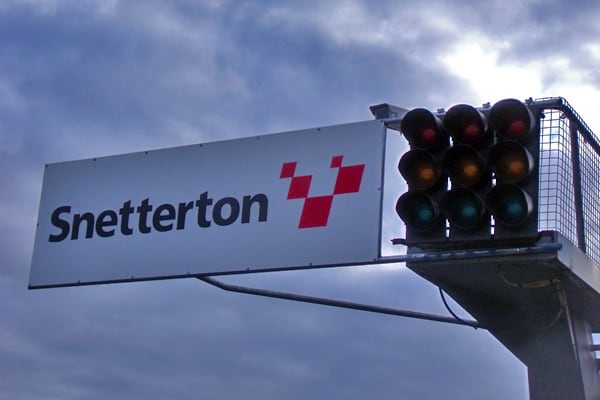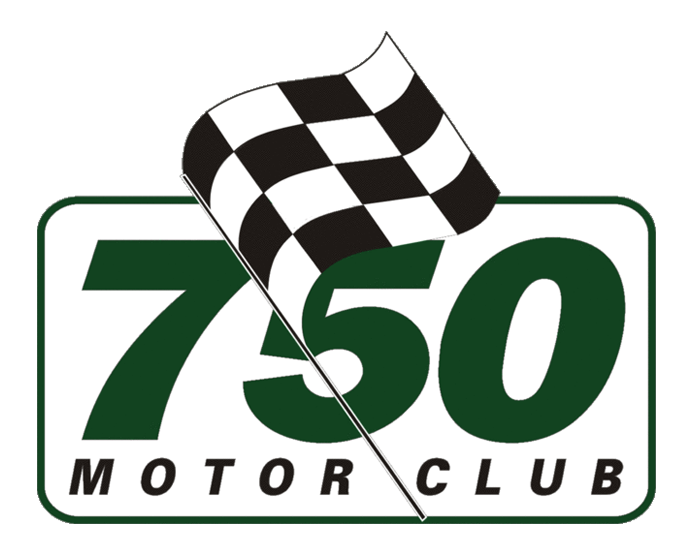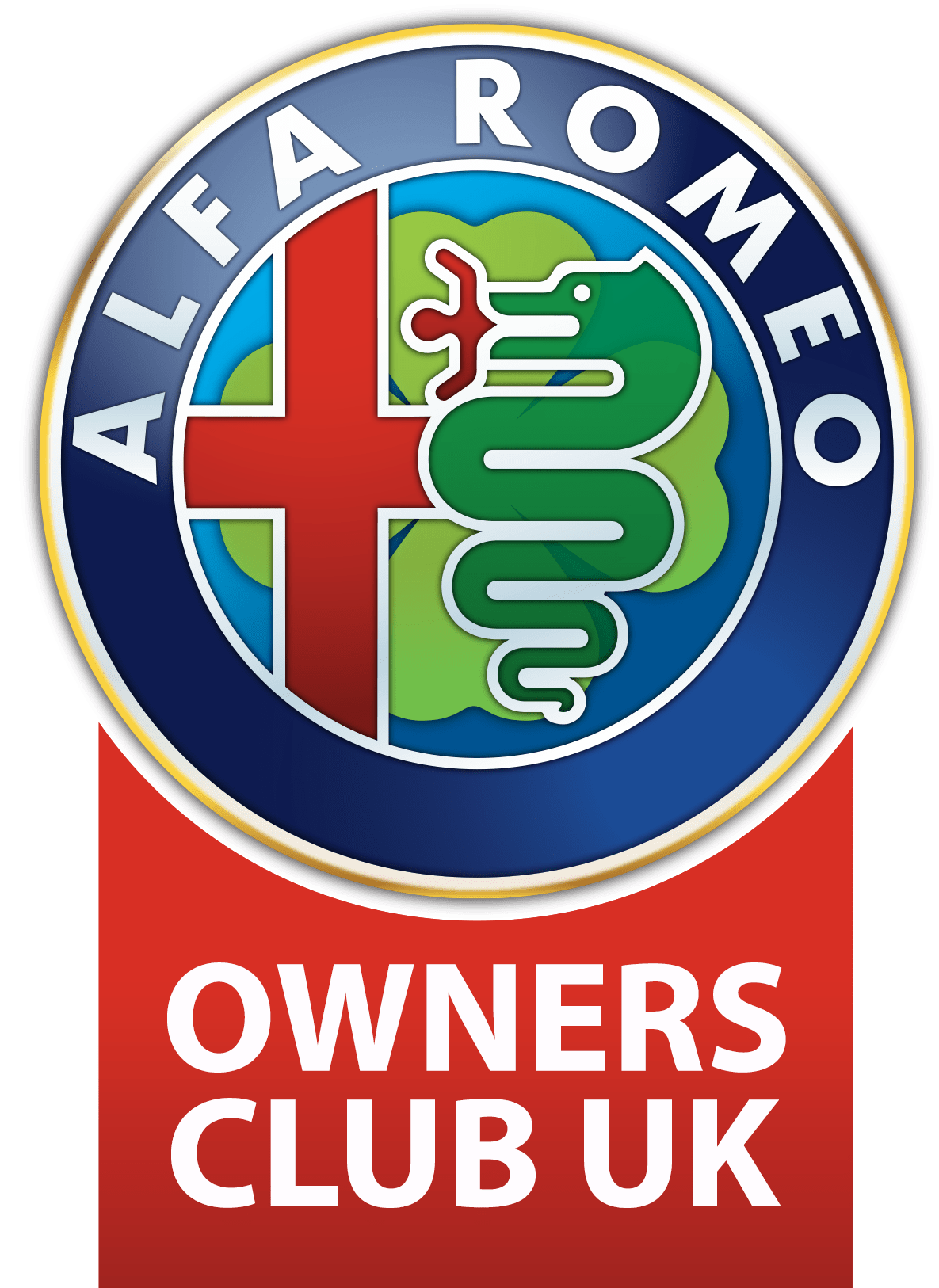Innovation for Snetterton
At the request of some Class E competitors, the championship Panel has agreed to an experiment that will see two separate grids lining up together for the single race at Snetterton on July 12. The idea is that the Class A1/A2/B/C will form up at the front in the normal way. There will then be a three row gap before we have the Class E field.

At the moment it is not 100% decided where Class D (if there are any entries) will fit in but the likelihood is that it would be with the A1/A2/B & C cars. Everyone will start at the same time when the red lights are extinguished. The idea has come about on safety grounds as it is hoped that we can avoid the situations that arise if there are slow starting modified cars which are quickly engulfed by quick starting Class E cars contesting every piece of track. Riches, the first corner, has often produced incidents in the past.
Not everything with an Alfa badge is a car!
The guitar commissioned by Alfa Romeo, which Matt showed in his last Friday Fix, reminded me of several other items that used the badge and the name (not always with official blessing) on products that certainly were not cars. Probably the most famous was the Aga like cooker produced at Portello in the immediate postwar period, and more of that at a later date. However, there were also tractors, trucks and aero engines to name but a few.
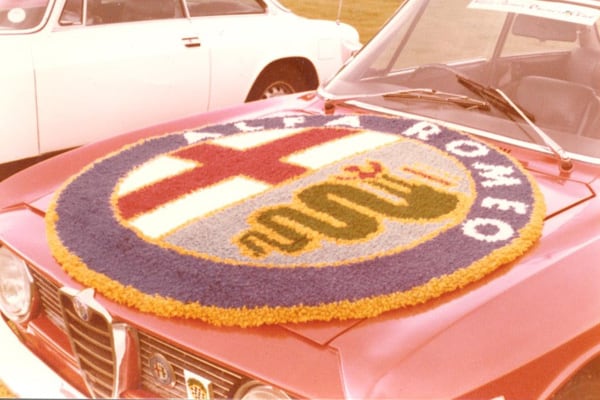
However, at the 1980 National Alfa Day held at Knebworth House there was a large rug in the shape of the Alfa badge and it appeared on the cover of the June 1980 AROC magazine. I had hoped that the magazine might have given more details of its origin but not so. I seem to recall, though, that it was made from a kit authorised by Alfa in either Australia or New Zealand, so the rug at Knebworth might have been the only one in the UK. If anyone has more information, please let me know. In the meantime, I will be looking for other items under the same heading.
Latest News from Bianco
Paul Plant has sent me some news on further developments at Bianco which will result in even more cars and drivers running under their banner as the 2014 season enters its second half. “We have been under instruction to find Arthur McMahon a replacement Alfa race car after the sale of his Fiat Punto at the beginning of the year. We had several trips and ended up flying to the Balkans to look at cars in both Serbia and Bosnia Herzogovinia.

After our travels, Arthur has settled on a lovely NTechnology 147 Cup car. This is a later 2005 model with the later uprated rollcage as found in the face lifted Diesel Cup cars. It is actually the sister car of mine which was raced in the Cup 2005 and then in endurance races by a racing team in the Czech Republic called Racing Hardware. Since then, the car has spent its life in the Balkans doing hillclimbs and sprints. With the recent resurgence in people wanting Super Touring cars, most of the known cars from the area have been bought and then shipped to the UK. The chap selling the 147 decided that he wanted to use it to help finance the purchase of one of the last known Vauxhall Vectras in the Balkans. We did the deal and flew home. The next day Harry and I loaded up the trailer and embarked on a 4 day trip to collect the 147.
The car has now been stripped down and the sequential gearbox is undergoing a full refresh including altering the final drive ratios to make it more suitable for UK circuits. The 147 itself is being fully updated to conform with the MSA Blue Book. For the first test we shall be limiting the car to 7500 rpm where it is producing 227 bhp and this will allow Arthur to shake it down and get comfortable with driving a left hand drive race car with a sequential gearbox. It has many lightweight panels and weighs 970 kg and peak power should be 251 bhp at 8500 rpm. We hope that Arthur will be out in his new mount at Snetterton on July 12.
We have been working hard to increase the size of Class E and now have three new builds under way. Two of the customers cars are now caged with the third still waiting for the cage to arrive from Italy. The three cars are for Gethin Llewelleyn, Joshua Lambert (who is part of the Bianco team on race weekends) and James Browning who works for Club Ricambi. We have a fourth driver, young Tom Hill, who will be renting my 156 for Anglesey. Tom has done many years karting and done very well in the championships in which he has competed but is now looking for step up to car racing. Having only recently turned 17, he has tested the Bianco red renta’ at Brands and on his first day out completed a best lap of 59.0” around the Indy circuit. Tom is doing extremely well in his current campaign of Rotax karting but hopes to make the transition to cars as soon as possible. After trying out several other possibilities from MX5 to Volkswagen Golfs, plus a couple of single seater tests, we are pleased that Tom has chosen Bianco and Class E for the next step of his career. He will have his own car for 2015 but we look forward to seeing how he settles in at Anglesey.
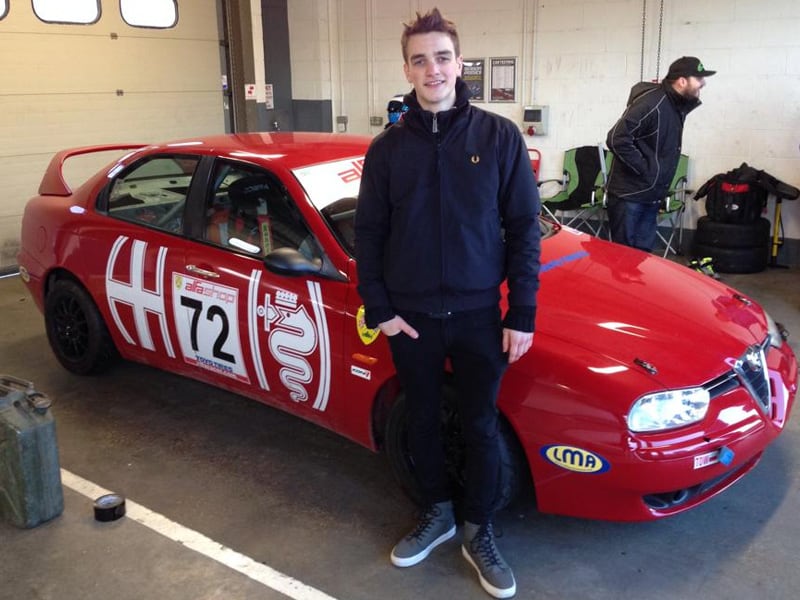
Tom Hill
Additionally, it appears that Tom was racing with Jon Billingsley in the Southern Kart Championship last year and that in previous years Martin Bishop (father of James Bishop) has been Tom’s race mechanic when he was running part of the Buckmore Park The Kart Shop Team. A few familiar faces to make him feel at home then.”
Newcomers at Snetterton.
It is always good to welcome new drivers to the Championship and there are two already entered for Snetterton. Russell Anderson, son of 33 racer Nick, has bought the David Thomas/James Thomas 146 and this will be his first ever race. Malcolm Chapman is the new owner of a familiar Class B 75 3 litre (remember Avon Racing’s no.44?) and Clive Hodgkin tells me that he has had “previous experience” but was not sure of the details.
What came before F?
The answer is Handicap, followed by A and D………. The first two years of the Championship, 1982 and 1983, were run on a handicap basis but in 1984 scratch races were introduced on multi-class basis. What appeared logical at the time was the smallest capacity production class should be A but after four years, the MSA decided that in all championships, class A should be for the most powerful and modified cars. Class A then became D for a year before we made our own small class re-organisation and it became F for 1989.
A brief resume of the first three in the Championship in those five years might jog a few memories
| 1984 | 1. Bob Buttery | 2. Nick Arkell (Alfasud Ti) |
3. Ronnie Chong |
| 1985 | 1. Peter Hilliard (Alfasud Ti) |
2. Ian Johnson (Alfasud Ti) |
3. Colin Roberts (Giulietta) |
| 1986 | 1. Ian Johnson (Alfasud Ti) |
2. Richard Drake (Alfasud Ti) |
3. Steve Winchester (Alfasud) |
| 1987 | 1. Keith Notley (Alfasud Ti) |
2. Roger Veall (Alfasud Ti) |
3. Terry Stacey (Alfasud Ti) |
| 1988 | 1. Terry Stacey (Alfasud Ti) |
2. Tim Daniells (Alfasud Ti) |
3. Agi Eugeniou (Alfasud Ti) |
“Nick Sismey and Gary Orchard take the spoils…..”
While looking for something else, I came across a photograph that interested me from the 1987 season. It shows a startline scene at Brands Hatch in late May that year, with Gary Orchard (23), Tim Daniells (13) and Terry Stacey, all in Alfasud Ti’s. Looking for a report of the race in the relevant AROC magazine, I found the headline “Nick Sismey and Gary Orchard take the spoils…..” Nick had headed the B to E race, while 27 starters rushed into Paddock on the first lap of the 10 lap (10 minute!!!) Class A race.
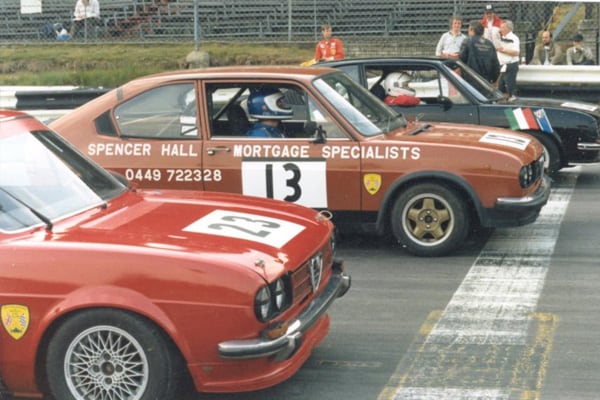
Front row for Class A race at Brands Hatch May 31 1987 – Gary Orchard (23), Tim Daniells (13) and Terry Stacey.
On the road it was Tim Daniells who emerged as the “winner” but he was subsequently excluded, amongst some controversy, for overtaking cars he was lapping under a yellow flag. As a result Gary (who is still involved with us through Spur Motorsport and a championship) took first place ahead of Terry, Keith Notley and Richard Drake (still racing a Sud from time to time). And looking further down the results, who should we find in 10th place but Gary Walker in his Alfasud Sprint. Gary was in his second season of racing at that point.
Alfa Romeo 158
Matt Daly’s item in Friday Fix no.12 jogged my memory regarding the re-appearance of the Alfa team with the 158 straight after the war. Many people may not realise that the cars actually raced in 1940 when war had already been declared between Germany and Britain, as Italy was not initially involved and seemed to carry on as if nothing was happening! Three 158s went to Tripoli in May, Giuseppe Farina winning from Clemente Biondetti and Carlo Felice Trossi, with the first non Alfa, Luigi Villoresi’s Maserati fourth. On June 10, Italy entered the war and seven 158s were spirited away to a cheese factory in the town of Melzo.

158s racing in Milan (September 1946) – Achille Varzi leads Count Trossi past the Castello Sforza.
At a Brooklands Italian Car Day a few year’s ago, I was lucky enough to find a copy of “Motor Racing 1946” by the then secretary of the BRDC, John Eason Gibson. It always seems amazing that within a month of the end of the war, a race had been held in the Bois de Boulogne but by 1946 there were plans for several events, mainly in France, Switzerland and Italy. These were held almost exclusively on street circuits as with the shortage of petrol, it was easier to get a good crowd. Many of the races were run to the new GP formula (up to 1500cc supercharged or 4500cc unsupercharged) and this is where Alfa re-emerged with the 158. Their first race was the Grand Prix de St.Cloud in Paris on June 9, using a 3.7 mile circuit that included a half mile (!) tunnel but both Jean-Pierre Wimille and Farina retired. Six weeks later came the Grand Prix des Nations in Geneva, run in two heats and a final, the latter heralding the way things were going to develop with Farina, Trossi and Wimille taking an Alfa 1-2-3. Everyone moved to Italy in September for races. Alfa entered a full team of five 158s for the longest race run so far, the Turin Grand Prix run on the roads round the Valentino Park, but the event (which lasted over two and a half hours) was not trouble free although Achille Varzi and Wimille led home a 158 1-2. The final race of the year for Alfa was the Milan GP which reverted to a heats and final format. The circuit was a frustratingly slow one set in a park close to the Sforza Castle. The final was won by Trossi’s 158 from the similar cars of Varzi and Consalvo Sanesi at a speed of 55.59 mph! Thus ended a successful year for Alfa at a time when anything that boosted the morale of the battered company and its workers was to be welcomed. 1947 couldn’t come soon enough.
Alfa Romeo looks to the future
Back in February there were rumours of yet another recovery plan being put in place for the Alfa Romeo. In May, Fiat Chrysler Automobiles held a presentation in Michigan (USA) to outline the future for all of the group’s brands. Alfa boss Harald Wester was very open about the company’s past mistakes including the Nissan Cherry based Arna which was described as “original sin”! Looking at what was being planned, he said that each new Alfa must be powered by “advanced innovative engines”, have “perfect 50/50 weight distribution”, and demonstrate “ground-breaking and distinctly Italian design”. To this end a new design operation had been created under the name of “Skunkworks” near Modena and was already employing over 200 people.

Autocar’s computer generated idea of what the new Giulia will look like when it appears in 2015.
The first goal is the launch of the new Giulia in 2015 which will be based on a new rear wheel drive platform and will use engines from a range of new lightweight units; four and six cylinder petrol units, also diesels. The power outputs of the of the 6 cylinder units are aimed at putting the top of the range Giulia Cloverleaf on a par with the BMWM3 and Mercedes C63 AMG which is a lofty ambition. The first computer generated pictures of the Giulia certainly look mouth-watering. Alfa’s aims are ambitious, to say the least, as other models come on line, going from 74,000 cars sold in 2013 to a lofty 400,000 in 2018. We shall be keeping a close eye on all this as time goes on.
Michael Lindsay
